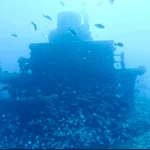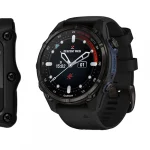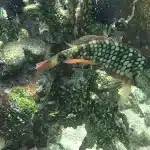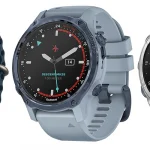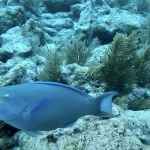Why Snorkel Vests are a Must in Key Largo
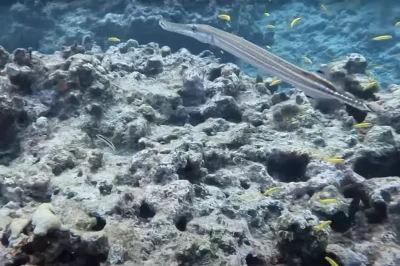
Table of Contents
- Why Snorkel Vests are a Must in Key Largo
- Debunking Myths About Snorkel Vests in Diving
- Avoid These Common Mistakes When Using Snorkel Vests
- The Evolution of Snorkel Vests: What’s Next?
- Comparing Snorkel Vests: Features and Benefits
- Stay Safe: The Role of Snorkel Vests in Emergency Situations
- Maximizing Comfort: The Best Snorkel Vests for Long Dives
- Snorkel Vests: An Ecological Perspective
Introduction
Explore how snorkel vests can enhance your diving experience in Key Largo, the hub of underwater wonders. This guide breaks down the essentials of snorkel vest use, ensuring your safety and enjoyment in the vibrant coral reefs.
Why Snorkel Vests are a Must in Key Largo
Debunking Myths About Snorkel Vests in Diving
The use of snorkel vests during diving is sometimes surrounded by misconceptions that prevent divers of all levels from appreciating their benefits. One common myth is that snorkel vests are exclusively for beginners. In fact, they offer buoyancy that benefits all divers, especially in challenging environments like currents or open waters, where fatigue can be an issue. For experienced divers, snorkel vests enhance safety, conserve energy, and build confidence.
Another misconception is that snorkel vests restrict movement. Modern designs are lightweight and allow a full range of motion, with less drag than traditional life jackets. This means divers can manoeuvre easily while maintaining buoyancy, ensuring safety and comfort. Streamlined profiles enhance swimming efficiency, making them ideal for both leisure and exploratory dives.
Some divers think snorkel vests provide the same head support as traditional life jackets, but these vests focus more on buoyancy than head support. In emergencies, life jackets are more suitable for keeping the head above water. It’s crucial to understand when a life jacket might be necessary for safety.
Understanding these myths helps divers appreciate the practical applications and limitations of snorkel vests, allowing for informed choices that enhance underwater adventures and ensure safety in diverse aquatic environments.
Debunking Myths About Snorkel Vests in Diving
Common Mistakes When Using Snorkel Vests
Divers must be aware of common mistakes when using snorkel vests, as these can compromise both safety and enjoyment.
- Using a snorkel vest instead of a life jacket for non-swimmers: Non-swimmers should choose full life jackets, as snorkel vests provide insufficient buoyancy for safety.
- Ignoring poor fit or discomfort:
- Vests that ride up can cause chafing and instability without a crotch strap.
- Ill-fitting designs, like horse-collar styles, can be uncomfortable and cause distractions by reducing safety.
- Overlooking gear inspection: Vests that deflate unexpectedly underwater pose serious risks. Conduct thorough pre-dive checks for leaks or wear.
- Improper location selection: Starting in deep waters, such as by boat entries, increases stress for inexperienced snorkelers. Begin in shallow, calm areas for easier mask-clearing and breathing adjustment.
- Skipping practice sessions: Failure to test snorkel gear on land or in shallow water can cause panic due to improper fit or breathing techniques.
Safety Recommendations
Consider these recommendations to enhance safety and improve your snorkeling experience:
- Choose high-quality vests: Look for ergonomic designs with features like front-inflation bladders and side zippers to minimise neck strain and enhance mobility.
- Use supplemental straps: A properly secured crotch strap prevents the vest from shifting, although comfort considerations may lead to alternative designs.
- Conduct pre-dive safety checks: Ensure vest inflation, check for damage, and confirm a snug, non-restrictive fit.
- Start in shallow, sheltered environments: Practise breathing control, mask-clearing, and buoyancy in waist-deep water before progressing.
- Prioritise proper training: Learn to handle gear and understand emergency protocols, such as rapid ascent techniques, to mitigate risks in deeper waters.
Avoid These Common Mistakes When Using Snorkel Vests
The evolution of snorkel vest technology is a fascinating journey of practical innovations and increased safety awareness in underwater activities. Historically, snorkel vests were essential flotation devices that enhanced buoyancy, ensuring snorkelers’ safety while enjoying the marine world. While specifics on snorkel vest advancements are less documented than other equipment, parallels and future directions can be speculated on based on broader trends.
Recent innovations highlight the use of lightweight, high-performance materials. Modern snorkel vests often feature breathable fabric coatings and inflatable chambers made of durable nylon or advanced polymers, combining comfort and function for various aquatic activities. Adjustable straps and ergonomic designs have become standard to enhance fit and minimise drag, offering a more secure water experience.
Future innovations in snorkel vests may include:
- Smart Adjustable Buoyancy: This could allow automatic inflation/deflation based on depth and buoyancy needs, providing a tailored floating experience.
- Integrated Safety Features: Future vests might incorporate built-in GPS systems and emergency beacons to assist divers in distress, enhancing safety during solo excursions or in remote areas.
- Eco-Friendly Materials: With growing environmental consciousness, manufacturers may shift toward biodegradable materials and recycled plastics, aligning with sustainability trends.
- Multi-Functional Kits: Vests that support attachment points for cameras or lights can enhance experiences for recreational snorkelers and divers.
- Wearable Tech Integration: Features such as heart rate monitors and oxygen level alerts could become standard, providing divers vital information while submerged.
Snorkel vests will increasingly focus on merging safety, functionality, and environmental responsibility, transforming how divers of all skill levels experience the underwater world.
The Evolution of Snorkel Vests: What’s Next?
Snorkel vests primarily enhance buoyancy, comfort, and safety in underwater adventures, available in two main designs: horse collar and jacket-style vests. Each type is suited to different needs for exploring Key Largo’s vibrant waters.
1. Horse Collar Vest
Features:
- Compact design with a simple strap-and-buckle system for an adjustable fit.
- Inflatable front bladder that allows users to quickly customise buoyancy.
- Minimal bulk, making it easy to pack and quick to wear.
Benefits:
- Ideal for casual snorkeling due to its lightweight nature.
- Available in bright colours for enhanced water visibility.
- User-friendly with a quick setup process.
Limitations:
- Lacks UV protection.
- Offers less coverage than jacket-style vests.
2. Jacket-Style Vest
Features:
- Full upper-body coverage, often made from neoprene or durable nylon.
- Adjustable fit with various closure methods like zippers and straps.
- Equipped with built-in pockets for storing essentials.
Benefits:
- Provides UV protection, crucial for long sun exposure.
- Neoprene versions offer warmth in cooler waters.
- Enhances buoyancy control, with head inflation options.
Limitations:
- Bulkier and less portable than the horse collar style.
Key Largo & Scuba Diving Considerations
When choosing a snorkel vest for Key Largo activities, consider the following:
- UV Protection: A jacket-style vest is preferable for long sun exposure.
- Buoyancy Control: Vests allowing easy descent and ascent are ideal for reef exploration.
- Gear Storage: Pockets can hold reef-safe sunscreen and other essentials.
Top Models
- Scubapro Cruiser: Features a neoprene back, side zipper, and inflatable front for added comfort and buoyancy.
- Scubamax Snorkel Jacket: Offers multiple pockets, mesh drains, and a head inflation feature.
- Phantom Aquatics Jacket: Provides full nylon coverage with a soft nylon lining for enhanced comfort.
Note: Snorkel vests are not Coast Guard-approved and should not substitute personal flotation devices (PFDs) on boats. They are designed for calm waters and specific buoyancy requirements.
Dive Computers
- Diving Computers for Female Divers
- Wreck Diving Computers
- Beginner Diving Computers
- Low-Light Diving Computers
- Technical Diving Computers
- Freediving Computers
- Underwater Photography Diving Computers
- Cold-Water Diving Computers
- Travel-Friendly Diving Computers
- Multi-sport Diving Computers
- Budget-Friendly Diving Computers
- Advanced Recreational Diving Computers
- Smartwatch-Compatible Diving Computers
- Child-Friendly Diving Computers
- Military or Professional Diving Computers
Comparing Snorkel Vests: Features and Benefits
Snorkel vests are crucial for scuba diving and snorkeling safety in Key Largo, particularly in its diverse marine environments. Here’s how they enhance safety:
Key Safety Advantages
- Buoyancy Support:
Inflatable or foam snorkel vests offer adjustable buoyancy, reducing fatigue during dives. This is especially useful in Key Largo’s conditions, where currents or prolonged dive times can exhaust divers. They aid shallow divers in navigating smoothly with minimal weight.
- Emergency Preparedness:
These vests act as personal flotation devices in emergencies, helping with muscle cramps, jellyfish stings, or sudden exhaustion. They provide visibility to boaters and other divers, crucial in busy waters like the Florida Keys. They also facilitate flotation during recovery from health issues such as heart attacks.
- Exposure Protection:
Unlike traditional life jackets, snorkeling vests offer coverage that protects against sunburn, abrasions, or cold during deeper or longer exposures. This is beneficial in Key Largo’s sunny, tropical environment.
Vest Types for Diving
| Type | Benefits | Best For |
|---|---|---|
| Inflatable | Lightweight, compact, adjustable buoyancy | Travellers, shallow dives |
| Foam-Filled | Consistent buoyancy, no inflation required | Beginners/new divers |
| Hybrid | Combines flexibility and reliability | Variable conditions |
For scuba diving in Key Largo, lightweight inflatable vests are ideal due to their minimal bulk and ease of use during gear-heavy dives. Always pair with proper training and situational awareness to maximise safety and enjoyment in the vibrant underwater world.
Stay Safe: The Role of Snorkel Vests in Emergency Situations
Snorkel vests offer specific safety features that enhance underwater experiences, especially in regions like Key Largo, known for strong currents and sunny conditions.
Benefits
- Buoyancy Control:
Inflatable snorkel vests allow for adjustable buoyancy, aiding in precise control during ascents, descents, or floating. This flexibility is critical in shallow dives or reef exploration, where conserving energy is essential.
- UV Protection & Comfort:
Jacket-style vests offer full-back coverage, shielding against lengthy sun exposure, crucial for tropical areas like Key Largo. Neoprene materials add warmth and comfort during extended sessions.
- Emergency Preparedness:
Vests act as a safety net in unexpected situations like muscle cramps, jellyfish stings, or exhaustion, enabling rest and flotation. Their bright colours enhance visibility to nearby boats.
- Travel-Friendly Design:
Compact options, like horse-collar styles, are lightweight and easy to pack, making them ideal for visitors to popular locations such as Key Largo.
Safety Features
| Feature | Details |
|---|---|
| Visibility | Neon colours improve detectability in open water, reducing collision risks. |
| Emergency Flotation | Inflatable designs offer instant buoyancy in crises, combating exhaustion. |
| Adaptability | Adjustable straps accommodate various body types and skill levels. |
| Specialised Use | Allows diving down for shallow observations, like coral reefs, while maintaining buoyancy. |
Key Considerations
- Not a Coast Guard Substitute: Snorkel vests are not U.S. Coast Guard-approved and should not replace standard life jackets on boats.
- Proper Fitting: Ensure a snug, non-restrictive fit to avoid hampering movement or breathing.
- Buddy System: Pair with a dive partner for added safety in challenging conditions.
Vests like the Scubapro Cruiser exemplify these benefits, offering adjustable buoyancy, UV protection, and a streamlined design suited for reef environments.
Maximizing Comfort: The Best Snorkel Vests for Long Dives
Snorkel Vests: An Ecological Perspective
Snorkel vests play a significant role in promoting environmentally responsible practices among divers and snorkelers. While they primarily aid buoyancy, they also influence environmental interactions, particularly in coral reef areas.
Effective use of snorkel vests reduces unintended contact with delicate coral structures. Direct interactions, such as standing on corals or careless fin use, can cause severe damage, reducing biodiversity and compromising reef integrity. Studies indicate that minor disturbances, like fin kicks, can damage coral polyps, essential for reef stability.
The buoyancy of snorkel vests helps maintain a safe distance from sensitive marine species and coral environments, reducing stress on marine life from chasing or touching activities. Such disturbances disrupt feeding and mating behaviours in marine organisms, causing additional stress.
Promoting snorkel vests aligns with ecological initiatives like the Green Fins programme, which advocates for sustainable snorkeling practices. These programmes encourage responsible tourism, helping mitigate the ecological impact of recreational snorkeling.
In conclusion, the responsible use of snorkel vests enhances snorkelers’ safety and enjoyment while protecting coral reefs and marine ecosystems when combined with ecological awareness and sustainable practices.
Snorkel Vests: An Ecological Perspective
Snorkeling vests are mandatory safety equipment in Key Largo, especially during guided tours or park-operated activities. Their enforcement by boat crews and tour operators enhances visibility and safety. Key aspects include:
- Visibility: Bright colours make snorkelers easier to spot from boats, reducing collision risk or missed pickups. This is vital in busy waters like Key Largo, where numerous vessels operate simultaneously.
- Environmental Protection: Vests prevent snorkelers from inadvertently standing on coral reefs, protecting fragile marine ecosystems. Buoyancy helps users navigate more effectively while maintaining a safe distance from coral structures.
Most Key Largo tour operators provide buoyancy-control vests, along with masks, snorkels, and fins as part of safety protocols. These vests are usually sanitised and offered to ensure a proper fit and optimal functionality. This practice enhances safety and promotes a hygienic experience for each snorkeler.
Operators also emphasise environmentally responsible snorkeling. Participants are trained on equipment maintenance, coral reef preservation, and local conservation guidelines, ensuring Key Largo’s natural beauty is preserved for future generations while enjoying its rich marine life.
Sources
- Great Ever – Can You Snorkel with a Life Vest? Exploring the Possibilities
- Dip ‘n Dive – Life Jacket vs. Snorkeling Vest: Different Types of PFDs
- Kauai Sea Tours – When Snorkeling, Should You Wear a Life Jacket?
- Islands – Don’t Make These Mistakes When Snorkeling for the First Time
- Xing Dun Marine – Snorkeling Vest: The Comprehensive FAQ Guide
- Cruise Critic – Don’t Swim: How Far Out is Safe with a Vest?
- Wikipedia – Snorkel (Swimming)
- Ninja Shark – A History of Snorkelling & Scuba Diving

